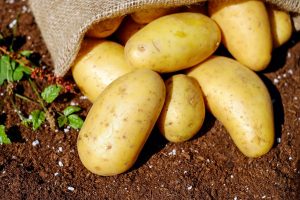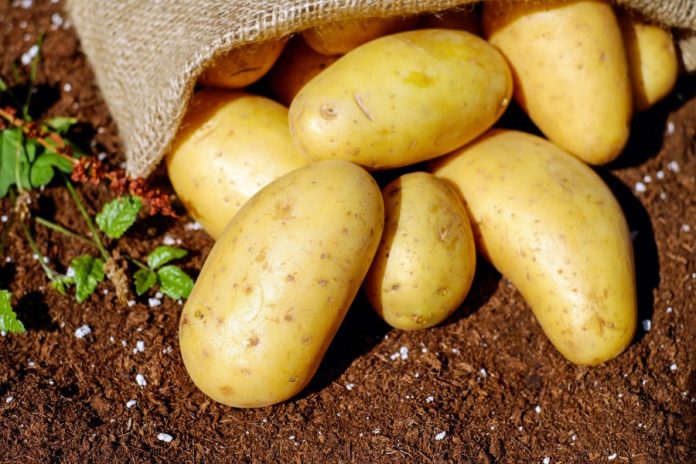
The fruits and vegetables you planted last spring, six months ago, are probably looking ragged by now. Many may have stopped producing.
Those you water and keep alive all summer will get a second wind when the first cool front arrives in mid-September, but some things, like potatoes and green beans, can just be planted anew, then nurtured in July and early August.
Feed stores stock seed potatoes– small tubers with buds in the eyes. My favorite is Yukon Gold, but red potatoes run a close second. Last spring, I put in Kennebecks, which store well into the winter. I get a thrill harvesting and eating homegrown potatoes at Thanksgiving.
The ground is already warm, so if you’re going to be in town with plenty of access to a watering hose, you can put a lot of seeds right in the ground in late July. As they say at the racetrack– ladies and gentlemen start your engines.
One of the easiest second season plants to cultivate is the common green bean, phaseolus vulgaris. Other names for this particular fruit are string bean, snap bean, French bean and haricot bean. The seed is the true bean, but we also call the pod a bean. We eat immature pods, but can let the fruits mature then collect the seeds to eat or save.
Thoroughly mature bean pods have a tough texture. “Horticultural” beans, which produce large, but tender pods– may be purchased through catalog companies. I have a friend who pickles horticultural bean pods for a savory treat.
Texan bean aficionados actually plant seeds every two-weeks, after the last spring freeze, so they have a continuous harvest through late-November. Try this during the fall growing season.
Beans belong to the legume plant family. They like full-sun, good drainage, consistent water, food and friable, low-acid to neutral pH soil. Friable means ground that crumbles when you give it a drink and a squeeze. Their roots “fix” nitrogen in the soil, which is a good thing.
I might add, that backyard chickens like to munch the end-of-life plants; and, of course, you can dig leftover plants into the garden to become compost. Add lots of organic matter–compost, aged manures and mulch–to make black gumbo clay or sandy topsoil friable. If you do that, you can fudge on the pH, as far as run-of-the-mill beans are concerned.
Common green beans grow into bushes that mature in about eight weeks; vines (pole beans) mature in about 10-weeks. If you plant and water in July and August, you’ll have a crop by September and October.
Bush beans top out at 18-inches high, while the vines grow to eight-feet and need trellising. When a vine bean reaches the top of its trellis, pinch the terminal tip to tell the plant to make side branches. The only limit to trellis designs is your imagination.





 GIF.gif)











